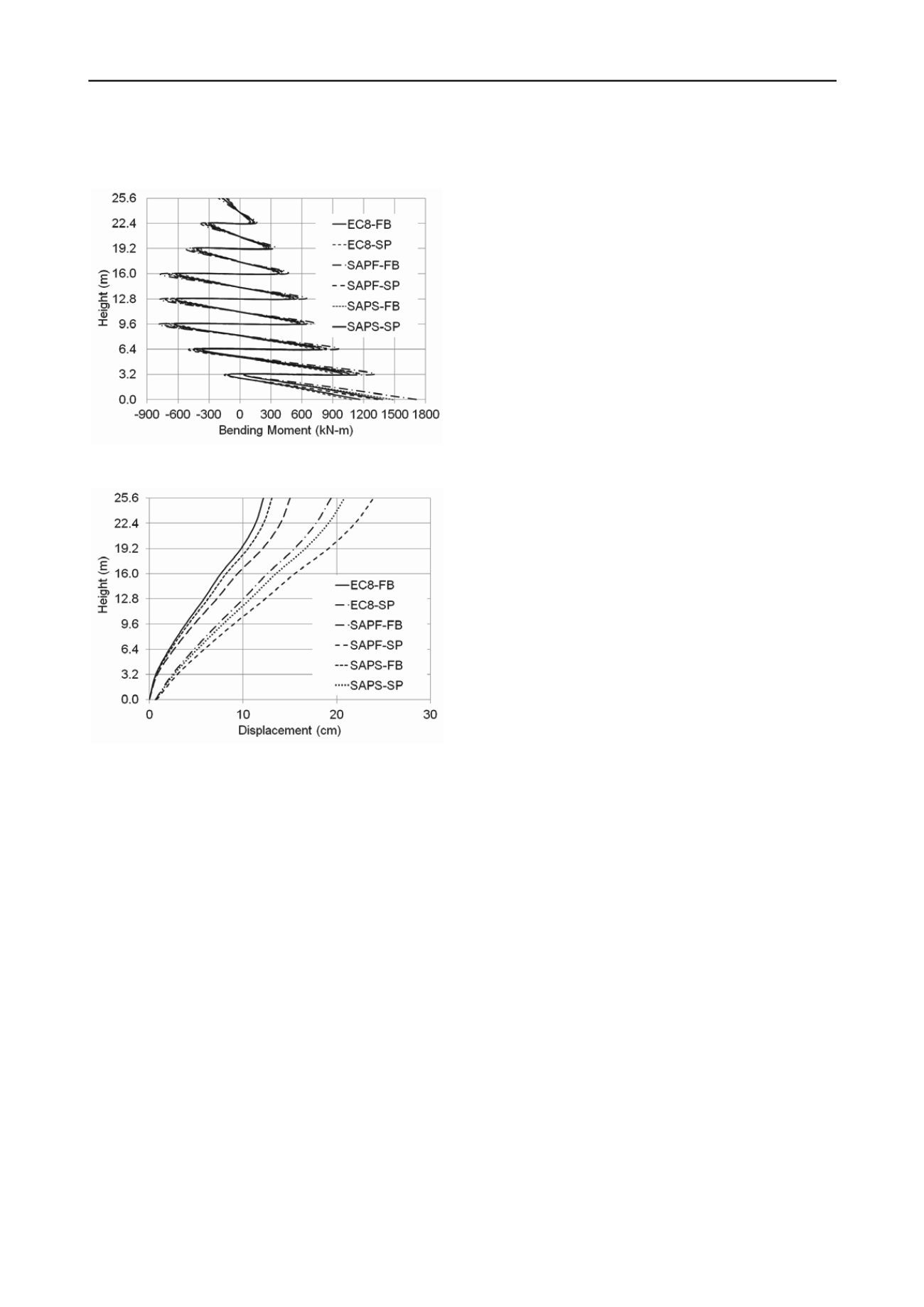
2842
Proceedings of the 18
th
International Conference on Soil Mechanics and Geotechnical Engineering, Paris 2013
deflection profiles is due to the abrupt cross-section changes in
the column with increasing height.
6 ACKNOWLEDGEMENTS
The authors acknowledge the financial support of the Széchenyi
István University within the framework of TáMOP 4.2.2/B-
10/1-2010-0010 application.
7 REFERENCES
Blaney G.W., Kausel E.and Roesset J. M., 1976. Dynamic Stiffness of
Piles.
Second Intl Conf on Num Meth in Geomechanics,
Vol II,
Virginia Tech, Blacksburg, Va. 1001-1012.
Dai W. and Roesset J.M. 2010. Horizontal dynamic stiffness of pile
groups: Approximate expressions
Soil Dyn. & Eq. Engrg.
(30) 844-
850.
Gazetas G. and Dobry R. 1984. Horizontal Response of Piles in Layered
Soil,
Jour. Geotech. Engrg
. 110 (1), 20-40.
Novak M, ElSharnouby B. 1984. Evaluation of dynamic experiments on
pile group.
Jour. Geotech. Engrg.
110(6):738–56.
Figure 5. Column bending moments for rigid- and spring-base
conditions.
Novak M. and Nogami T. 1977. Soil–pile interaction in horizontal
vibration.
International Journal of Earthquake Engineering and
Structural Dynamics
(5) 263–281.
Penzien, J 1970. Soil Pile Foundation Interaction, Chapter 14 in
Earthquake Engineering
, R.L.Weigel ed., Prentice-Hall, 518 p.
Simonelli A.L. 2008. Fondazioni profonde in Metodi Innovativi per la
Progettasione di Oere di Sosteno e la Valutasione della Stailita dei
Pendii,
Rete dei Laboratori Universitari di Ingegneria Sismica
(Reluis), 1-71.
Tóth, L., Győri E., Mónus P., Zsíros T. 2006. Seismic Hazard in the
Pannonian Region.
The Adira Microplate: GPS Geodesy, Tectonics,
and Hazards,
Pinter N., Grenerczy G., Weber J., Stein S., Medak
D. (eds), Springer Verlag, NATO ARW Series 61, 369-384.
Wilson E. 2002. Three-Dimensional Static and Dynamic Analysis of
Structures.
Computers and Structures Inc
., Berkeley CA. 1-423.
Wolf J.P. 1985.
Dynamic Soil-Structure Interaction
Prentiss-Hall NJ
Figure 6. Lateral displacement vs. height for an interior column.
5 CONCLUSIONS AND FURTHER STUDY
The engineering community in Hungary has started to put the
seismic provisions of Eurocode-8 into practice. Some parts of
the provisions have been easy to deliver, while others require
more experience and constructive feedback on their best
application. The fact that Hungary has moderate seismicity
makes delivery of the code a challenge: seismicity is strong
enough to require substantial changes to design practice, but is
not obvious to the public and professionals since no major
earthquakes have been witnessed in recent history.
Implementing a useful but rigorous methodology for pile
design for seismic loading is equally challenging. One of the
major efforts in the author’s department is to develop a
continuously-improving system of analysis, design, testing and
assessment of foundations and structures for seismic and other
dynamic forces.
The authors are working on integrating sophisticated
foundation modeling into the structural design work-flow. This
includes methods to evaluate field data, laboratory testing,
geotechnical modeling, and structural design. The final goal is a
more seamless movement from site characterization to final
design. Being able to bridge between geotechnical and
structural analysis software is part of this process.


